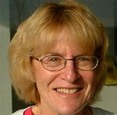By Shoshanna Katzman
Acupuncture and Qigong are two methods of relieving stress, improving mood and enhancing overall health – minor differences.
Acupucture is a technique that an individual receives from an acupuncturist, whereas Qigong is an exercise that is done by the person themselves. Both are done for self-healing - acupuncture is the application of fine needles into meridians (energy pathways) to balance the flow of Qi, and Qigong are gentle movements coordinated with the breath to move and cultivate Qi within the meridians. Both acupuncture and Qigong can be done during the same period, or one may choose to do one over the other. Oftentimes it is a personal preference, versus a Chinese medicine specialist recommended one over the other or both based on the presenting energetic and physical symptoms and signs.
Qigong is a system of Chinese Medicine healing developed in ancient China about 3,000 years ago. The word Qigong (pronounced “chee-gung””) is derived from two Chinese characters; the first Qi refers to vital energy and the second Gong refers to cultivation – therefore Qigong is an ancient form of Chinese exercise that cultivates energy.
It is practiced to cultivate Qi, a vital energy that flows through every living being. Practicing Qigong opens the flow of Qi not only in the area of the body that is moving, but also throughout the body.
It is a form of movement that stimulates energetic and physical healing through opening and strengthening not only the flow of Qi, but also Blood in the body. It is a gentle method of self-healing and fitness practiced to enhance health and longevity and to ameliorate health conditions such as pain, fatigue, digestive disturbance, low immunity, high blood pressure, depression, anxiety, gynecological problems and much more.
Qigong can be practiced at any age and any ability. The movements are easy to learn and practicing them is tremendously invigorating, yet calming at the same time. As both a physical and mental exercise, Qigong regulates the body, breath and mind to keep the body fit, while maintaining a peaceful, balanced mind.
I became interested in healing methods as a competitive athlete in tennis, field hockey and basketball throughout high school and college. I found a new arena to develop my physical potential through the study of T’ai Chi, Qigong and Kung Fu in 1974. I was living in San Francisco near the panhandle of Golden Gate Park where many students practiced these ancient forms of exercise. I became intrigued with watching this graceful, energizing form of exercise and became a student. Before long, the healing potential of these exercises became evident as the arthritic pain in my knees disappeared along with feeling more centered, energized, and at peace. The more I trained, the better I felt, leading toward daily practice of between two to six hours per day. I have continued practicing these movements for my own health and longevity, as well as taught it to others for many years.
Qigong doesn’t stand above the other methods - it is simply a way to open free flow of energy within the body to restore and maintain health through movement that a person performs on their own. Acupuncture is a way for this to happen through the insertion of needles into the meridians of the body to move Qi flow through the body in a balanced way – Qigong and T’ai Chi accomplish this through gentle, flowing movements with directed mind intent.
Qigong is quite easy to learn from a book, DVD or in person with a teacher to guide you. You can even follow a youtube video at your convenience. Either sign up for a class, push play on your recorder, or open your book to page one to get started.
Results can be felt in many times immediately; however for some it takes numerous practice sessions of Qigong. However, results continue to increase especially when Qigong is practiced regularly, with clear intent, and concentrated effort combined with relaxation and being mindful to stay in the moment.
My approach is unique due to my specialized training in not only Qigong and T’ai Chi for 40 years, but also experience as an acupuncturist and herbalist for 30 years and energy medicine for 15 years. This combination and approach to healing is integrated into my teaching of Qigong creating a powerful method for self-healing and wellness empowerment for my students.
What’s the difference between Qigong and Tai Chi? T’ai Chi has originated as a martial art and has today become more of an exercise practice for health and longevity – although many T’ai Chi instructors still teach martial arts application in their classes. Qigong has been created with application to health and medical conditions specifically. For example, the Qigong set that I teach has a protocol for balancing hormones, one for increasing the health of the vital organs, and another for strengthening bones. T’ai Chi also accomplishes these goals but through a set of continuous movements, whereas Qigong is usually comprised of individual exercises that are repeated over and over and then the practitioner changes to the next movement and repeats that over and over.
Shoshanna Katzman is Director of the Red Bank Acupuncture & Wellness Center in NJ since 1988 and has been involved in the field of Chinese medicine for more than 35 years. She is author of Qigong for Staying Young: A Simple 20 Minute Workout to Cultivate your Vital Energy (Avery Penguin Group 2003).
http://www.healing4u.com/shoshanna.html

Post new comment
Please Register or Login to post new comment.